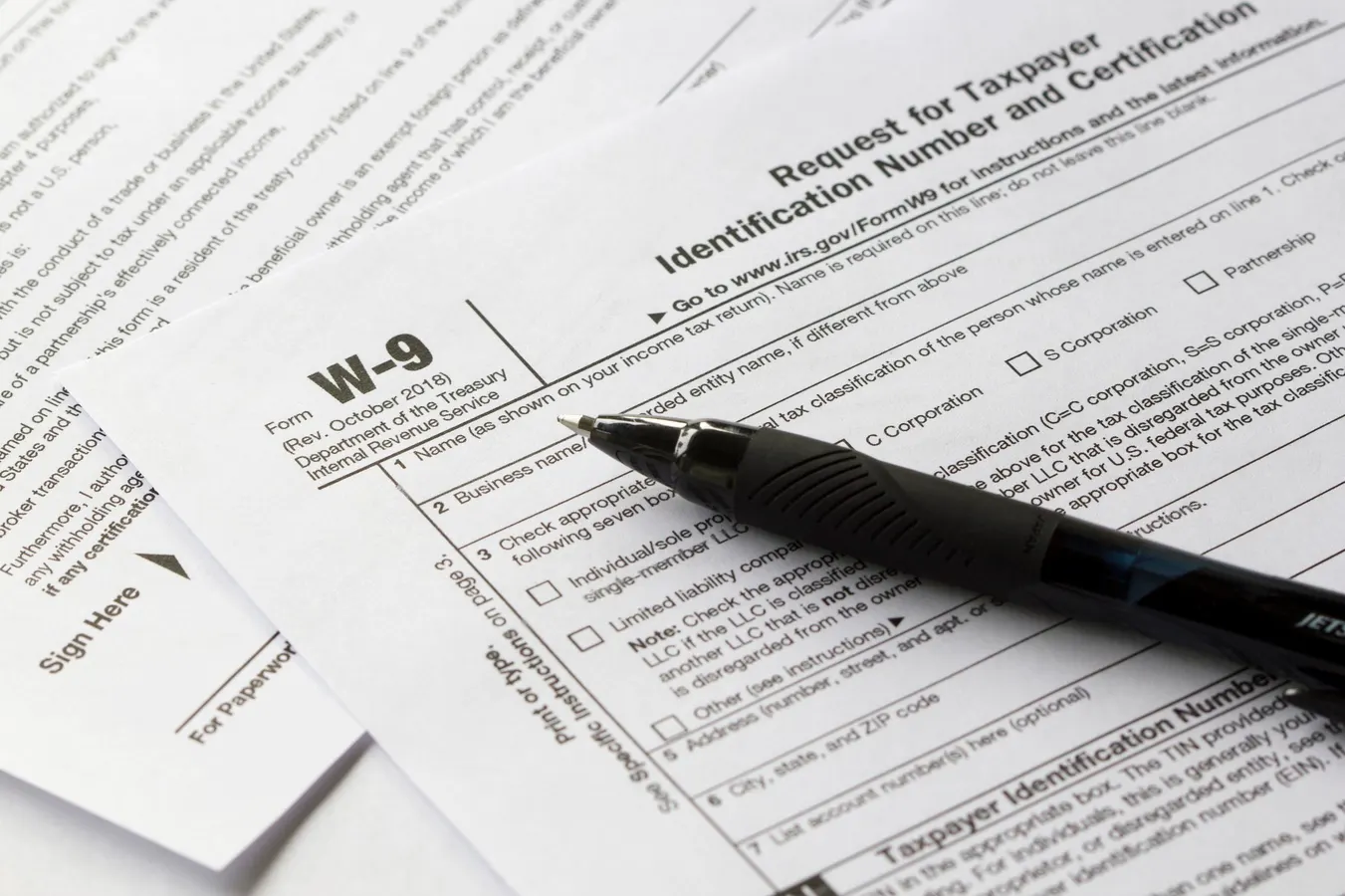By Forbes Staff,Kelly Phillips Erb
Copyright forbes

Form W-9, Request for Taxpayer Identification Number and Certification.
The IRS continues to roll out drafts of some 2026 tax forms, including a draft of Form W-9, Request for Taxpayer Identification Number and Certification.
(Other recently released draft forms that may warrant a closer look include Form W-2 and the new Schedule 1-A, used to calculate new deductions for tips, overtime, car interest, and seniors.)
Key Updates For Form W-9
There are two key updates for the draft W-9.
First, on the draft version of Form W-9, the instructions now make clear that sole proprietors must use their Social Security Number and disregarded entities must use the owner’s taxpayer identification number (TIN). This is true even if you are a single-member LLC that is disregarded as an entity separate from its owner, and even if you have an Employer Identification Number (EIN) for the LLC. You are not to report the EIN of the sole proprietorship or disregarded entity.
There is also a new category of exempt recipient for sales of digital assets. This is clearly a nod to the new Form 1099-DA. Part II (Certification) of Form W-9 now adds a checkbox to facilitate a broker obtaining certification from another broker that they are U.S. digital asset broker as defined in the Regulations. (You may recall that Notice 2024—56 teased that this information would appear on the revised Form W-9).
Screenshot of Draft Form W-9 Certification
Kelly Phillips Erb
Since you can develop and use your own Form W-9—referred to as a substitute Form W-9—if the content is substantially similar to the official IRS version, you’ll want to make sure that you update your forms accordingly.
New Tax Provisions
The One Big Beautiful Bill Act (OBBBA) changed several controversial reporting requirements for gig workers and those who use payment apps like PayPal for business.
Reporting thresholds for Form 1099-K (for payment card and third-party network transactions), Form 1099-MISC (for payments not covered by other 1099 forms), and Form 1099-NEC (for nonemployee compensation) have been changed. The old reporting threshold for Form 1099-K is now new again, as OBBBA reinstates the $20,000 and 200 transactions thresholds, retroactive to 2022 (or as if the reporting changes in the American Rescue Plan Act of 2021 had never happened)—that means that the $20,000 and 200 transactions thresholds will apply to the tax year 2025.
The reporting threshold for Forms 1099-MISC and Form 1099-NEC will increase from $600 to $2,000, effective as of the 2026 tax year (the forms you’ll receive in 2027).
Additionally, brokers are now required to report customers’ sales and exchanges of digital assets. Those transactions would be reported to the IRS on the new Form 1099-DA—that reporting is facilitated by the use of Form W-9.
While the current administration reversed the “DeFi Broker Rule” that created reporting requirements for trading front-end service providers that work directly with users on digital asset transactions, informational reporting is still required for certain “brokers” involved in digital assets transactions on Form 1099-DA. DeFi refers to peer-to-peer financial services on the blockchain. In simple terms, it’s crypto and digital currency without banks, financial service companies, or other middlemen. DeFi brokers are a little more challenging to define, as stakeholders pointed out after the final regulations were made public.
This was a new rule, but not a new tax—owners of digital assets have always been subject to tax on the sale or exchange of digital assets. However, under the Infrastructure Investment and Jobs Act (IIJA), reporting requirements similar to those that already apply to traditional financial services are now in place to help taxpayers file accurate returns and pay taxes.
What Do You Need To Know About Form W-9?
You’ve likely filled out Form W-9, Request for Taxpayer Identification Number and Certification, many times before. It is used to provide your taxpayer identification number, such as your SSN, ITIN, or EIN, to certain payers.
The form is typically filled out by a U.S. person. For this purpose, a U.S. person includes an individual (citizen or resident alien), domestic trust or estate, and a partnership, corporation, company, or association created or organized in or under the laws of the United States.
The information on Form W-9 is used to fulfill specific IRS reporting requirements and potentially to issue Forms 1099. Forms 1099 are used to report a slew of payments not included on Form W-2 (for wages) or other tax forms. This might include earnings from stocks and dividends, pension distributions, canceled debts, certain real estate transactions, non-employee compensation—and of course, now, digital assets.
Also, Form W-9 may be used for Foreign Account Tax Compliance Act (FATCA) and backup withholding purposes. Specifically, FATCA requires participating foreign financial institutions to report all U.S. account holders that are specified U.S. persons—Form W-9 has space to enter an Exempt payee code, if any, and Exemption from FATCA Reporting Code, if any.
Taxpayers often don’t blink when asked to complete Form W-9 by a bank or a financial institution, but may question why other companies might ask. The short answer is that it’s part of doing business under our current tax laws. Companies that may ask you to complete Form W-9 include resale platforms, sites where you sell goods or services (like Etsy), and companies that offer affiliate or ad revenue (like Google or Amazon).
You may also be asked to complete Form W-9 if you provide services as an independent contractor or a freelancer, since the person or company who pays you for those services may be required to report the payments to the IRS on a Form 1099-NEC.
While a copy of some Forms 1099 may be submitted to the IRS, Form W-9 is typically not forwarded. The party that requested Form W-9 is required to keep it on file in case of a discrepancy or reporting issue, and to confirm or substantiate backup withholding.
And no, even though you don’t have to submit it to the IRS, it’s not optional. You may be subject to a penalty if you refuse to complete a Form W-9.
Unlike Form 1099, there is no proper due date for Form W-9. Forms W-9 are typically issued on an as-needed basis—for example, when you sign on as an independent contractor or open a new account.
More From The IRS
Of course, the IRS tacked on its familiar warning (well, with a few new tweaks) about drafts to Form W-2:
This is an early release draft of an IRS tax form, instructions, or publication, which the IRS is providing for your information. Do not file draft forms. We incorporate all significant changes to forms posted with this coversheet.
However, unexpected issues occasionally arise, or legislation is passed—in this case, we will post a new draft of the form to alert users that changes were made to the previously posted draft. Thus, there are never any changes to the last posted draft of a form and the final revision of the form. Forms and instructions are subject to OMB approval before they can be officially released, so we post drafts of them until they are approved. Drafts of instructions and pubs usually have some additional changes before their final release.
If you have thoughts to share, the IRS will accept comments online at IRS.gov/FormsComments. Include “NTF” followed by the form number (in this case, it would be “NTFW9”) in the body of the message to route your message properly.
For more updates, you can check out the IRS website. You can also check back for our Forbes tax team coverage.
ForbesA First Look At Form W-2, Updated For Tips, Overtime, And Trump Account ProvisionsBy Kelly Phillips ErbForbesOne Big Beautiful Bill Act Changes Form 1099 Reporting For Gig Workers And Those Who Use Payment Apps Like PayPal For BusinessBy Kelly Phillips ErbForbesA First Look At The New Tax Form For Claiming Deductions For Tips, Overtime, Car Interest And SeniorsBy Kelly Phillips Erb
Tax Breaks: Timely tax tips and the latest news delivered to your inbox weekly
Got a tip? Share confidential information with Forbes.
Editorial StandardsReprints & Permissions



